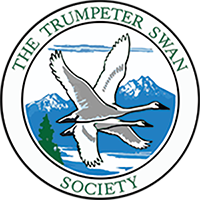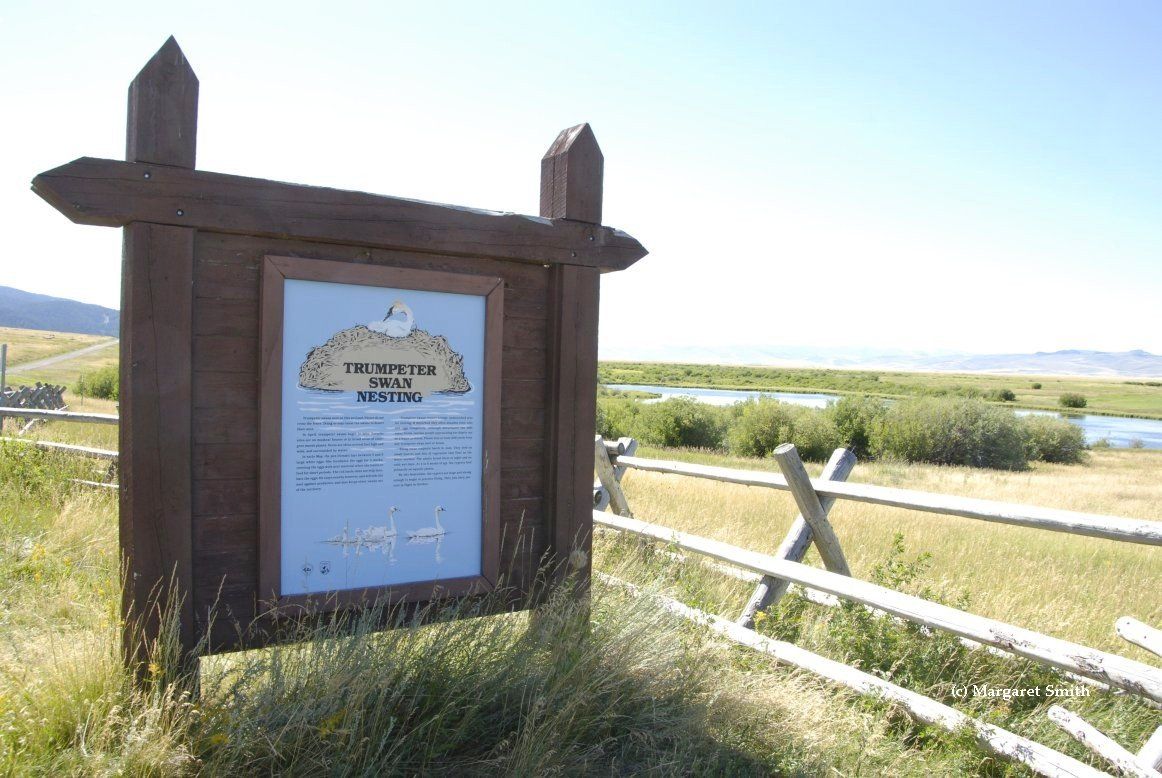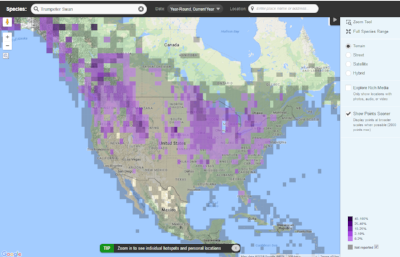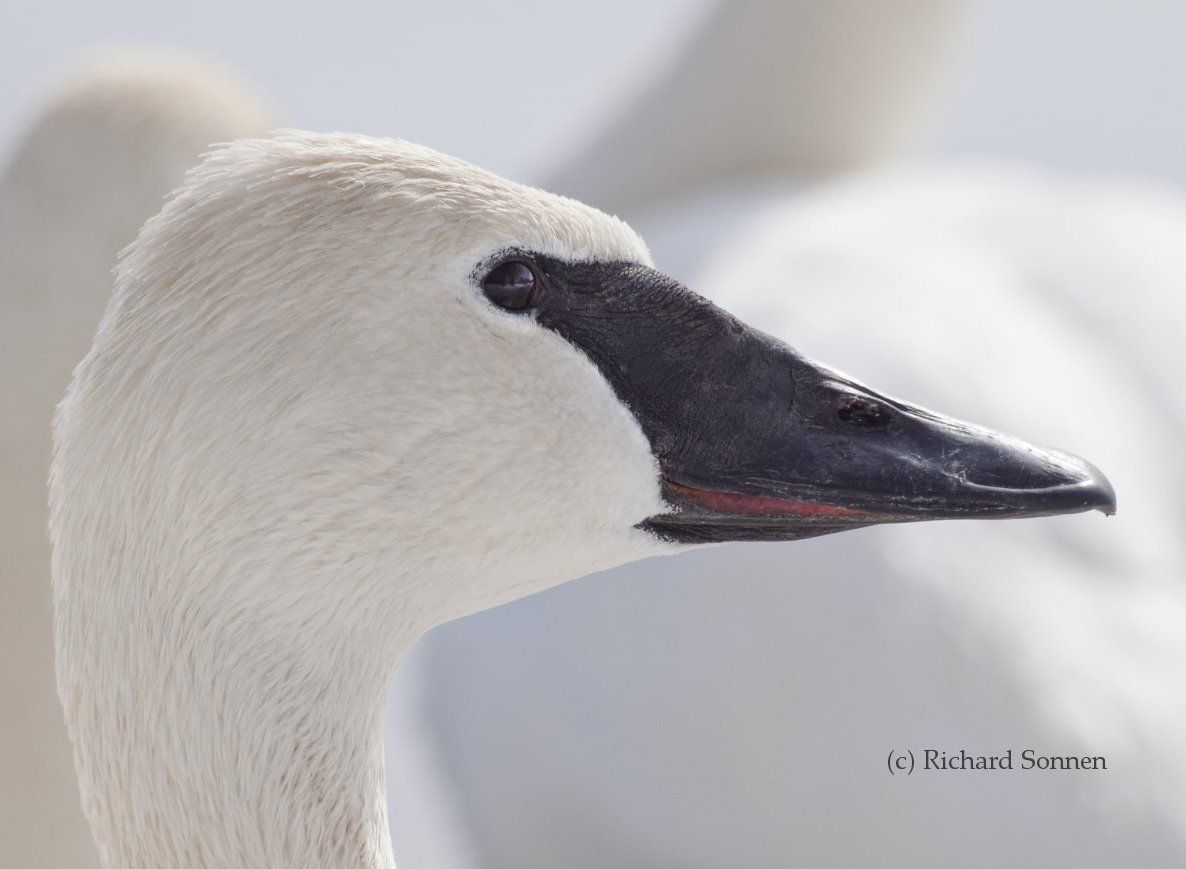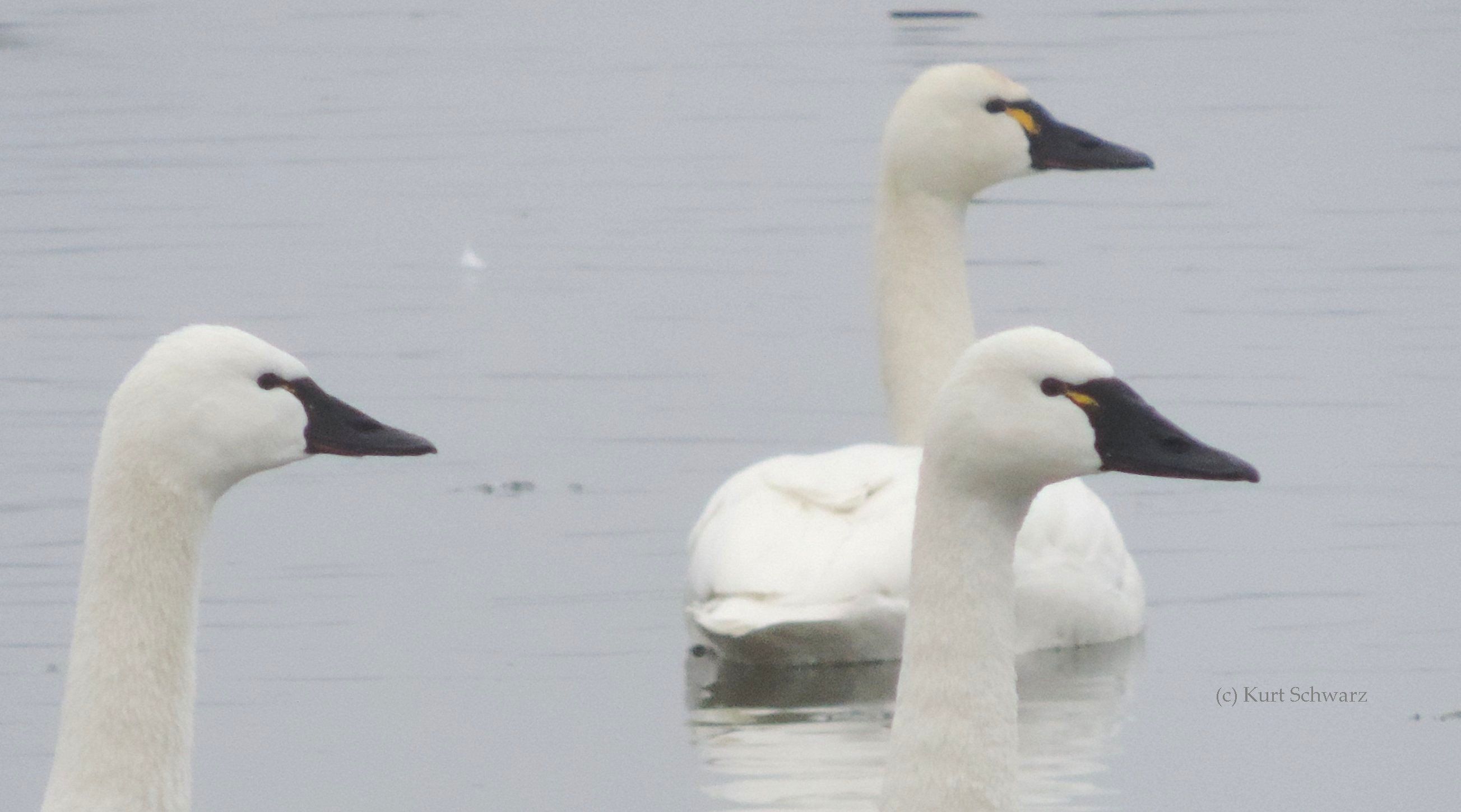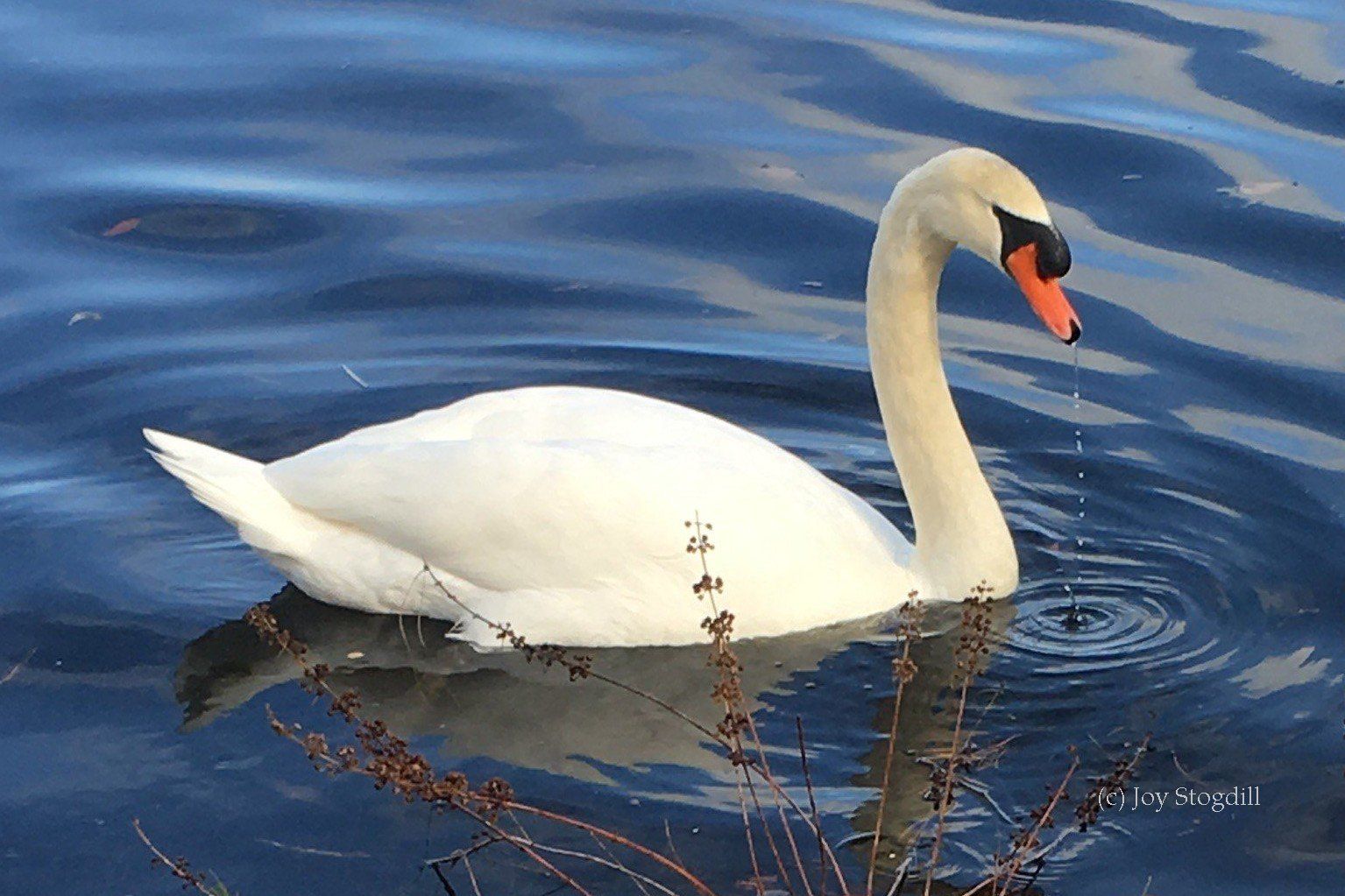Photograph by Barry Hetschko. Tundra Swan (left / top ) and Trumpeter Swan (right / bottom)
Which swan species did you see?
Swan Identification
If you have seen a swan for the first time, or are unsure what kind of swan you are seeing, looking through our Swan ID section is a great place to start.
Here are some basic things to know. There are three species of swans in North America. The Trumpeter Swan (Cygnus buccinator) and Tundra Swan (Cygnus columbianus), sometimes known as the Whistling Swan, are native to North America. The Mute Swan (Cygnus olor) is a Eurasian species that has been introduced and now breeds in the wild in some areas. All three are very large all-white birds.
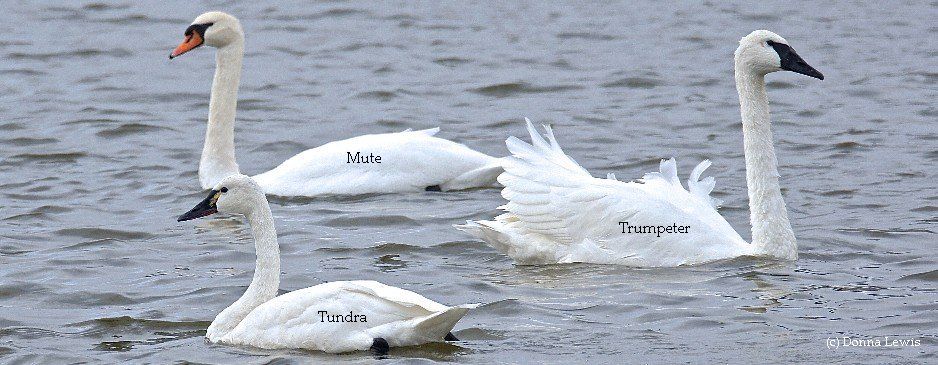
Photograph by Donna Lewis
What should you look for to ID your swan?
Trumpeters and Tundras are similar looking species that are often difficult to tell apart.
Distinguishing Trumpeters from Tundras is not easy, but it is possible by paying close attention to a few distinctive characteristics.
- The voice and call are the single best indicators to tell Trumpeter and Tundra Swans apart. If in doubt, listen for their call.
- Trumpeter Swans almost always have solid black bills, with the black markings extending to the eyes. The bill is typically straight, and there is often a red "lipstick" marking where the upper and lower bills meet. Trumpeter Swans are larger than Tundra Swans.
- Tundra Swans usually have yellow markings below the eyes. The yellow markings vary in size and may be very small and difficult to see up to large and easily visible. Tundra Swan bills typically have a concave, or scooped shape.
Mute Swans are easily identified by the bright orange bill and distinctive knob on the forehead.
Quick Swan Photo ID
Report your Trumpeter Swan sighting!
Swan Basics
The male swan is called the Cob. He typically weighs more and looks slightly larger than the female (the Pen), although it is often difficult to tell the male and female apart. The female swan will incubate the eggs and both parents will take care of the young once they are hatched.
Young-of-the-year swans are called cygnets (pronounced "sig-nets"). Cygnets have gray feathers, typically remaining on the head and neck through its first year. Trumpeter Swan cygnets turn white during their second summer following their molt.
At that point, they become "sub adults"- they have white feathers like an adult, but won't reach breeding age until age 3-6 years. Sub adult swans often remain in groups until they are old enough to form their own pair bonds.
Learn more about adult swans (white): their unique call, and how to tell the difference between swan species you may see!
Did you see a large white bird with black wing tips?
If you saw a large white bird with black wing tips on the underside, you most likely saw a snow goose or pelican. Learn more.
